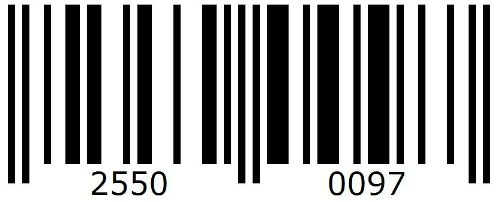Consumer Protection of Unauthorized Cosmetic Distribution in Indonesia's E-Commerce
DOI:
https://doi.org/10.26555/novelty.v11i1.a15189Keywords:
Consumer Protection, Unauthorized Distribution, Cosmetics, E-CommerceAbstract
Introduction to the Problem: Technological advances in the field of pharmacy or medicine, especially in the field of cosmetics today, have provided many alternatives for consumers, especially women, to meet their needs. The presence of various cosmetic products does provide hope for women to look more beautiful and attractive. But often, many cosmetics products have no active ingredients mentioned. Motivated by big profits, the manufacturers do not register their products for further assessment. When it comes to the market, the products are actually without standard authorization, or in the other cases using false or fictitious marketing authorization numbers. One form of protection to the consumer is the certainty of information contained in cosmetic packaging itself. The distribution of cosmetics without marketing authorization is also commonly found in applications or online stores. Still, on the one hand, it makes it easier for the public to conduct business transactions. However, compared with the easiness the online stores offered, when the products are still unauthorized, it will harm its users.
Purpose/Objective Study: This research discusses consumer protection for the circulation of cosmetics without marketing authorization in Indonesia through e-commerce.
Findings:This research shows that the Indonesian government protects consumers against the circulation of cosmetics without marketing authorization through the rules and laws. However, on the other aspect, those rules or regulations have no practical impact on society in this digital era. So, Indonesia should concern more to online activity where unauthorized marketing products are being marketed.References
Arlina, S. (2018). Perlindungan konsumen dalam transaksi jual beli online produk kosmetik (pemutih wajah) yang mengandung zat berbahaya berdasarkan Undang-Undang Nomor 8 Tahun 1999. UIR Law Review, 2(1), 317. https://doi.org/10.25299/uirlrev.2018.2.01.991
Barkatullah, A. H. (2007). Urgensi perlindungan hak-hak konsumen dalam transaksi di e-commerce. Jurnal Hukum IUS QUIA IUSTUM, 14(2), 247-270. https://doi.org/10.20885/iustum.vol14.iss2.art8
BPOM. (2018). Laporan tahunan BPOM tahun 2017. In Badan POM. Retrieved from https://www.pom.go.id/new/admin/dat/20191212/LAPTAH-BPOM-2018.pdf
Cai, Q., Tang, P., Filos-Ratsikas, A., & Zhang, Y. (2018). Reinforcement mechanism design for fraudulent behaviour in e-commerce. 32nd AAAI Conference on Artificial Intelligence, AAAI 2018, 321171, 957-964. Retrieved from https://www.aaai.org/ocs/index.php/AAAI/AAAI18/paper/viewPaper/16650
Carta, S., Fenu, G., Reforgiato Recupero, D., & Saia, R. (2019). Fraud detection for e-commerce transactions by employing a prudential Multiple Consensus model. Journal of Information Security and Applications, 46, 13-22. https://doi.org/10.1016/j.jisa.2019.02.007
Chen, L. (2017). Developing Asia in the era of cross-border e-commerce. In Economic Research Institute for ASEAN and East Asia (ERIA) (No. ERIA-DP-2017-11). Retrieved from https://think-asia.org/bitstream/handle/11540/7663/ERIA-DP-2017-11.pdf?sequence=1
Featherman, M. S., & Hajli, N. (2016). Self-service technologies and e-services risks in social commerce era. Journal of Business Ethics, 139(2), 251-269. https://doi.org/10.1007/s10551-015-2614-4
Ferrinadewi, E. (2005). Atribut produk yang dipertimbangkan dalam pembelian kosmetik dan pengaruhnya pada kepuasan konsumen di Surabaya.
Jurnal Manajemen Dan Wirausaha, 7(2), 139-151. https://doi.org/10.9744/jmk.7.2.pp.139-151
Graham, J. A. (2000). The psychology of fragrance and aromatherapy. In H. Butler (Ed.), Poucher's Perfumes, Cosmetics and Soaps (10th ed., pp. 749-767). https://doi.org/10.1007/978-94-017-2734-1_25
Hajli, N. (2015). Social commerce constructs and consumer's intention to buy. International Journal of Information Management, 35(2), 183-191. https://doi.org/10.1016/j.ijinfomgt.2014.12.005
Hajli, N., & Sims, J. (2015). Social commerce: The transfer of power from sellers to buyers. Technological Forecasting and Social Change, 94, 350-358. https://doi.org/10.1016/j.techfore.2015.01.012
Halla, N., Fernandes, I. P., Heleno, S. A., Costa, P., Boucherit-Otmani, Z., Boucherit, K., Barreiro, M. F. (2018). Cosmetics preservation: A review on present strategies. Molecules, 23(7), 1-41. https://doi.org/10.3390/molecules23071571
Ilham, R. A. (2015). Perlindungan hukum terhadap konsumen atas penjualan obat-obatan ilegal secara online. Jurnal Hukum, 10-17. https://doi.org/10.1145/3132847.3132886
Kanyaru, P. M., & Kyalo, J. K. (2015). Factors affecting the online transactions in the developing countries: A case of e-commerce businesses
in Nairobi country, Kenya. Journal of Educational Policy and Entrepreneurial Research (JEPER), 2(3), 1-7. Retrieved from http://www.jeper.org/index.php/JEPER/article/viewFile/91/103
Lee, S., Sung, B., Phau, I., & Lim, A. (2019). Communicating authenticity in packaging of Korean cosmetics. Journal of Retailing and Consumer Services, 48, 202-214. https://doi.org/10.1016/j.jretconser.2019.02.011
Liang, T.-P., & Turban, E. (2011). Introduction to the special issue social commerce: A research framework for social commerce. International Journal of Electronic Commerce, 16(2), 5-14. https://doi.org/10.2753/JEC1086-4415160201
Miru, A., & Yodo, S. (2004). Hukum perlindungan konsumen. Jakarta: Raja Grafindo Persada.
Pane, E. (2007). Perlindungan konsumen dalam perspektif undang-undang perlindungan konsumen dan hukum Islam. Pranata Hukum, 2(1), 60-78. Retrieved from https://media.neliti.com/media/publications/26675-ID-perlindungan-konsumen-dalam-perspektif-undang-undang-perlindungan-konsumen-dan-h.pdf
Rahmayani, N. (2018). Tinjauan hukum perlindungan konsumen terkait pengawasan perusahaan berbasis financial technology di Indonesia. Pagaruyuang Law Journal, 2(1), 24-41. Retrieved from https://jurnal.umsb.ac.id/index.php/pagaruyuang/article/view/887/798
Sutedi, A. (2008). Tanggungjawab produk dalam hukum perlindungan konsumen. Bogor: Ghalia Indonesia.
Syawaluddin, S., Joni, J., & Erwin, E. (2019). Influence of social media advertising, e-marketing and product quality on the process of purchasing nature cosmetics. International Journal of Research in Business and Social Science (2147- 4478), 8(5), 316-321. https://doi.org/10.20525/ijrbs.v8i5.491
Zeng, F., Huang, L., & Dou, W. (2009). Social factors in user perceptions and responses to advertising in online social networking communities. Journal of Interactive Advertising, 10(1), 1-13. https://doi.org/10.1080/15252019.2009.10722159
Zhao, W. X., Li, S., He, Y., Chang, E. Y., Wen, J.-R., & Li, X. (2016). Connecting social media to e-commerce: Cold-start product recommendation using Microblogging Information. IEEE Transactions on Knowledge and Data Engineering, 28(5), 1147-1159. https://doi.org/10.1109/TKDE.2015.2508816














